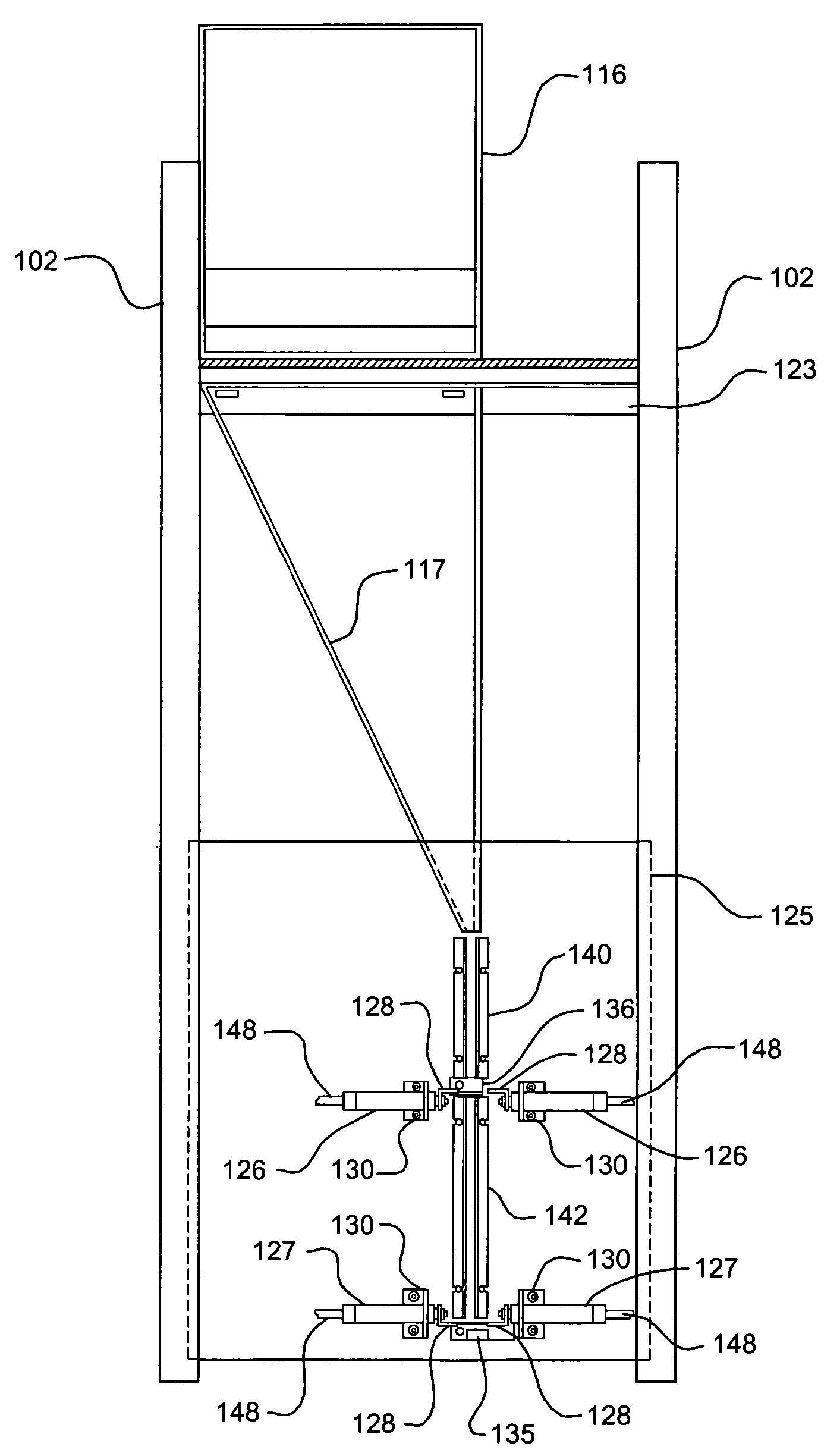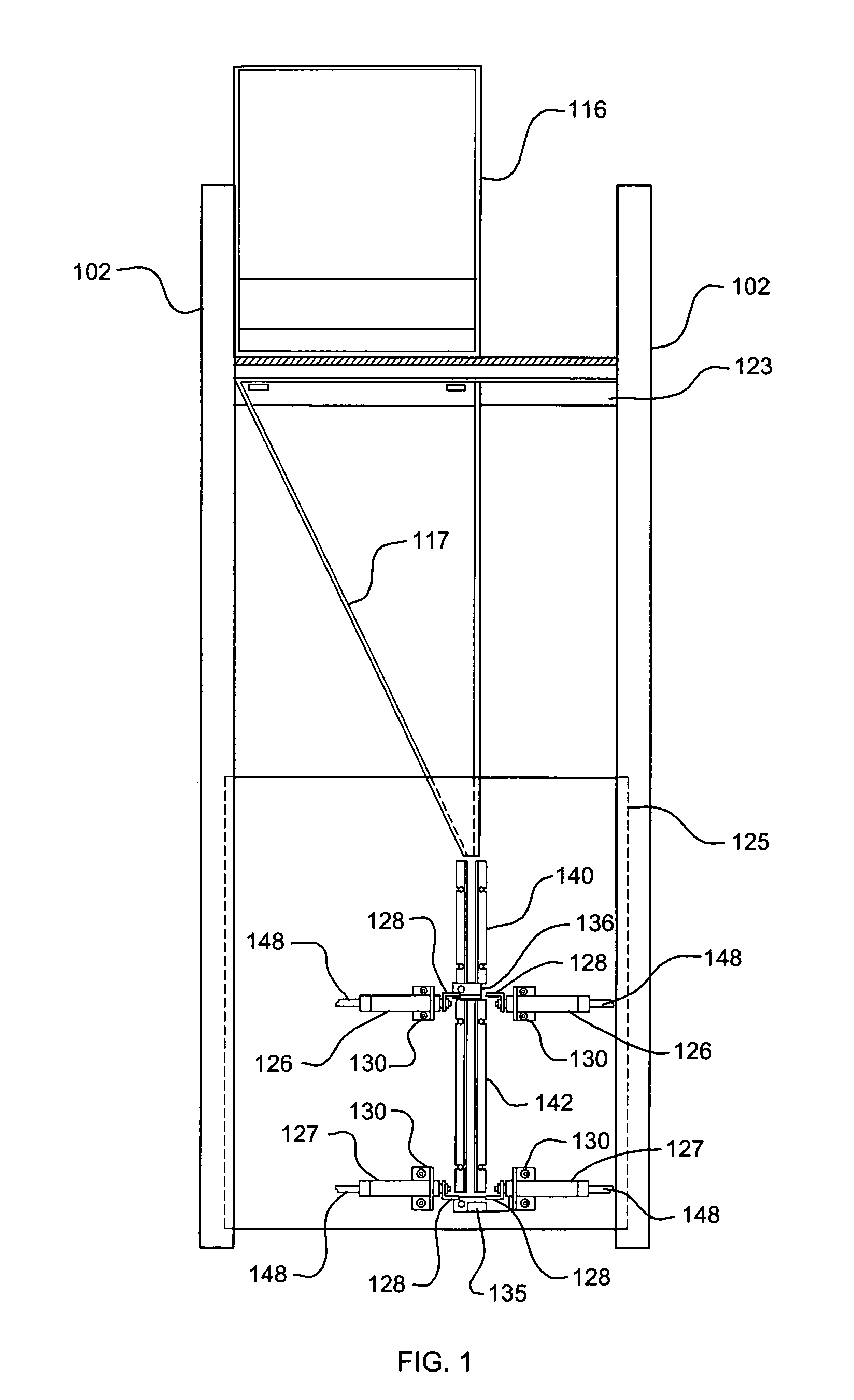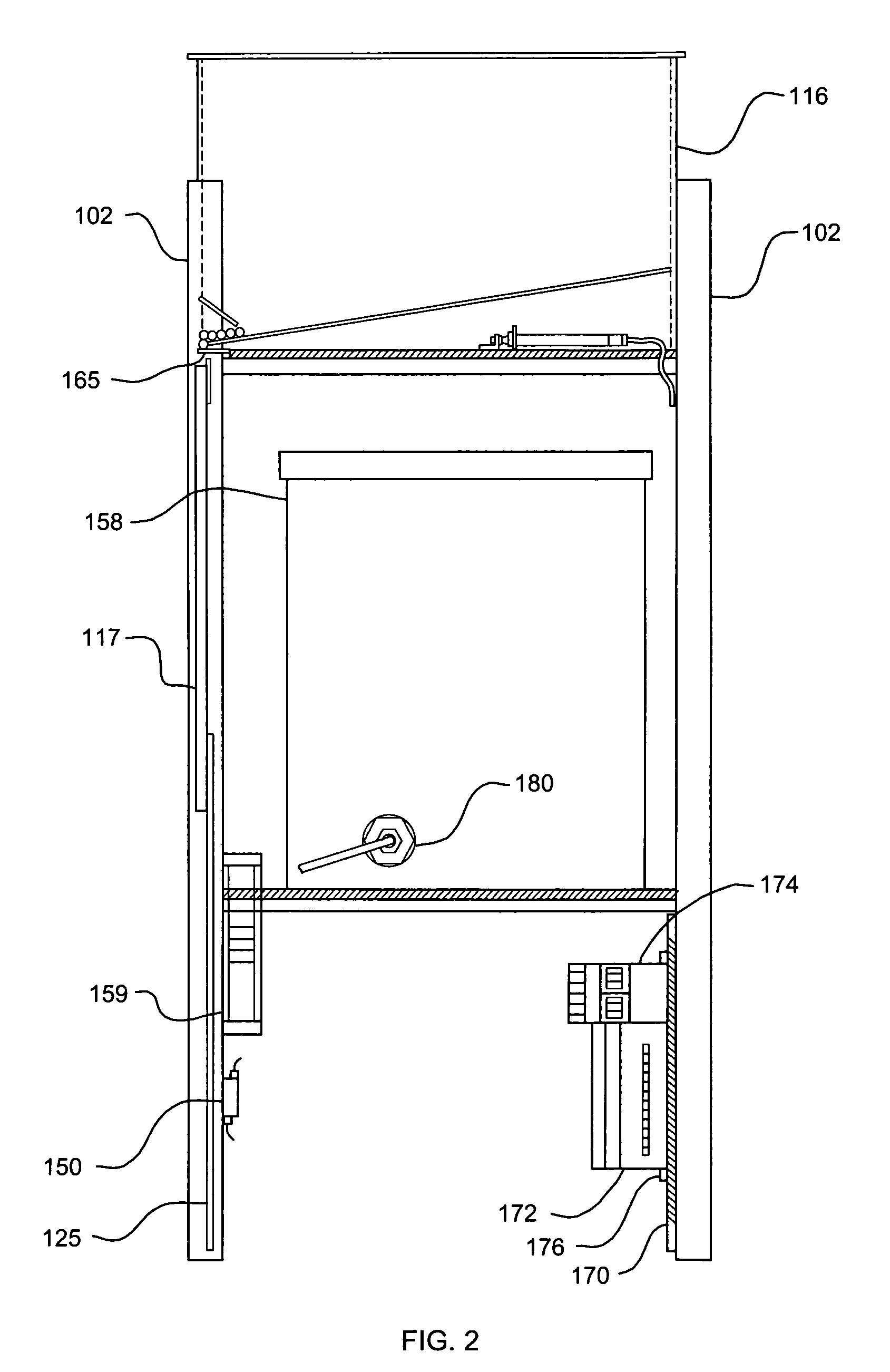Straw-filling device
- Summary
- Abstract
- Description
- Claims
- Application Information
AI Technical Summary
Benefits of technology
Problems solved by technology
Method used
Image
Examples
Embodiment Construction
[0025]The present invention is an automated, fully programmable, and adaptable device for filling straws or straw-like receptacles with any type of flowing, or flowable, liquid. The device of the present invention is portable, affordable, and highly adjustable. The present invention may be effectively utilized in many industries including, but not limited to, beekeeping (honey producing), maple syrup producing, coffee / tea, candy / food, medical, and industrial.
[0026]In an embodiment of the present invention, a straw or straw-like package is dropped from a hopper down one or more chutes into a capture area. The straw is then captured, held, and filled with a free flowing liquid, after which it is sealed. The straw dropping, capture, filling, and sealing actions are preferably automatically controlled via a pre-programmed electric sequence. The device also preferably automatically warms the fill liquid and switches itself off when the fill liquid is gone or the straw hopper is empty. Th...
PUM
| Property | Measurement | Unit |
|---|---|---|
| Time | aaaaa | aaaaa |
| Flow rate | aaaaa | aaaaa |
| Area | aaaaa | aaaaa |
Abstract
Description
Claims
Application Information
 Login to View More
Login to View More - R&D
- Intellectual Property
- Life Sciences
- Materials
- Tech Scout
- Unparalleled Data Quality
- Higher Quality Content
- 60% Fewer Hallucinations
Browse by: Latest US Patents, China's latest patents, Technical Efficacy Thesaurus, Application Domain, Technology Topic, Popular Technical Reports.
© 2025 PatSnap. All rights reserved.Legal|Privacy policy|Modern Slavery Act Transparency Statement|Sitemap|About US| Contact US: help@patsnap.com



